The Best DAW Controllers to Improve your Production Workflow
Speed up your DAW workflow.
Using a mouse exclusively can become too clinical, especially when trying to give your music a more organic feel. To overcome this obstacle, we’re checking out some of the best DAW controllers for your home studio setup.
Table of Contents
We’ve discussed various DAW systems previously, but external controllers become a considerable investment. So the first thing to think about when deciding which one to go with is looking at what exactly you are planning to control. Is it your DAW’s transport controls? Faders? Or plug-ins?
To be even more certain, it helps to know what kind of DAW user you are. As a mix engineer, for example, you’re probably going to be looking at something with 8 motorized faders and perhaps plug-in controls at a later stage.
- How to use DAW Automation
Choosing the Best DAW Controllers
Alternatively, a live musician will benefit from adding clip launch functionality with a button grid while post-production editors love jog wheels with high sensitivity for scrubbing back and forth when working with video footage.
Touchscreen controllers aren’t for everyone. However, iPads can be extremely versatile, allowing you to flip between multiple apps and offering almost seamless integration in some cases. So solutions like Logic Remote and Hexler TouchOSC are worth checking out.
Control Protocols
It’s important to note that controllers use 3rd-party protocols and some DAW developers manufacture their own DAW-specific controllers.
Let’s take a quick look at the most common controller protocols and their basic compatibility options:
- HUI (Human User Interface) supports Pro Tools, Cubase, Studio One, Reaper, and Digital Performer
- MCU (Mackie Control Universal) supports Pro Tools, Cubase, Studio One, Live, Digital Performer, Reason, FL Studio, Reaper, and Bitwig Studio
- EUCON (Extended User Control) supports Pro Tools, Cubase, Logic Pro X, Digital Performer, and Nuendo
- Other protocols like OSC (Open Sound Control) offer different advantages to MIDI CC, while native controllers might have their own specific protocols with excellent integration.
Find out which protocols are supported by your DAW, and remember not every controller offers plug-and-play functionality. Any controller could potentially work with any DAW, it just depends on how much time you have for creating your own custom mappings and trawling for controller templates online.
Now, we’ll dive into various available options and discuss some of the pros and cons in each case.
The Best DAW Controllers: PreSonus Faderport V2
Even the most advanced DAW users sometimes only automate one fader at a time for accuracy. So the PreSonus Faderport V2 is a great compact option with a single motorized fader, transport controls, and a rotary encoder.
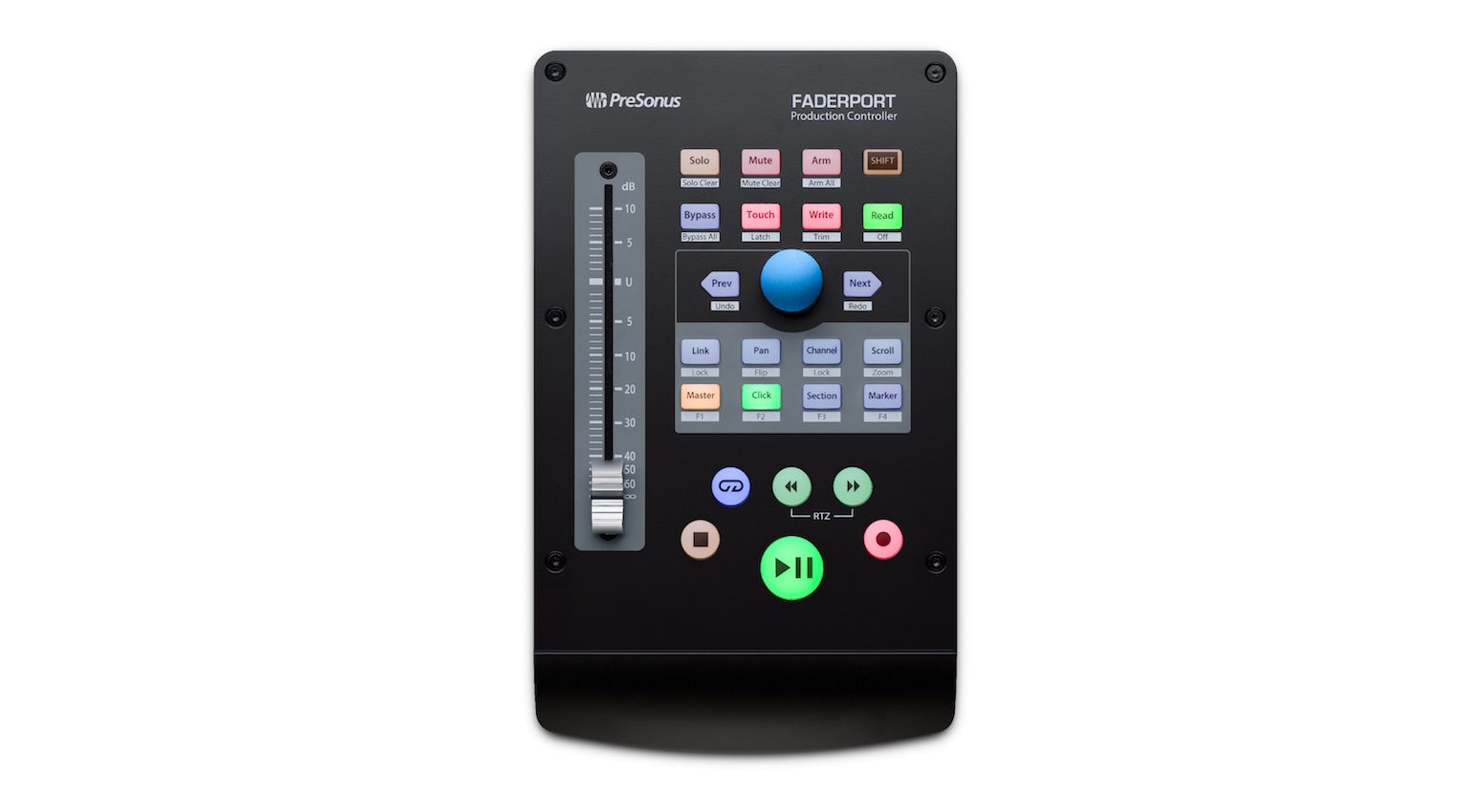
The Faderport is also available in 8-fader and 16-fader versions and offers seamless Studio One integration, as well as support for HUI and MCU protocols.
In addition, the Faderport connects via USB 2.0 and includes a footswitch port. Meanwhile, it’s powered with the included adapter.
- More from PreSonus

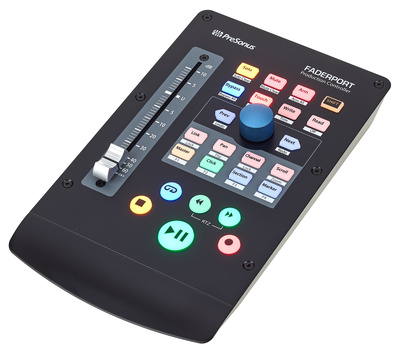



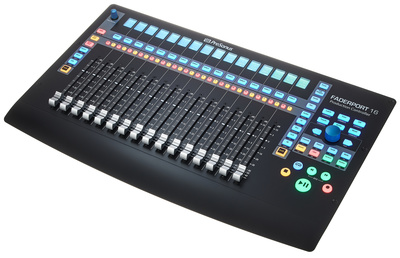
The Best DAW Controllers: Novation Launch Control XL 3
The Launch Control XL 3 is the latest version that makes this popular fader controller more robust and refined than ever. With eight smooth-action faders, 16 assignable buttons, and 24 rotary encoders, you have tactile control of all the major DAW software systems on the market.
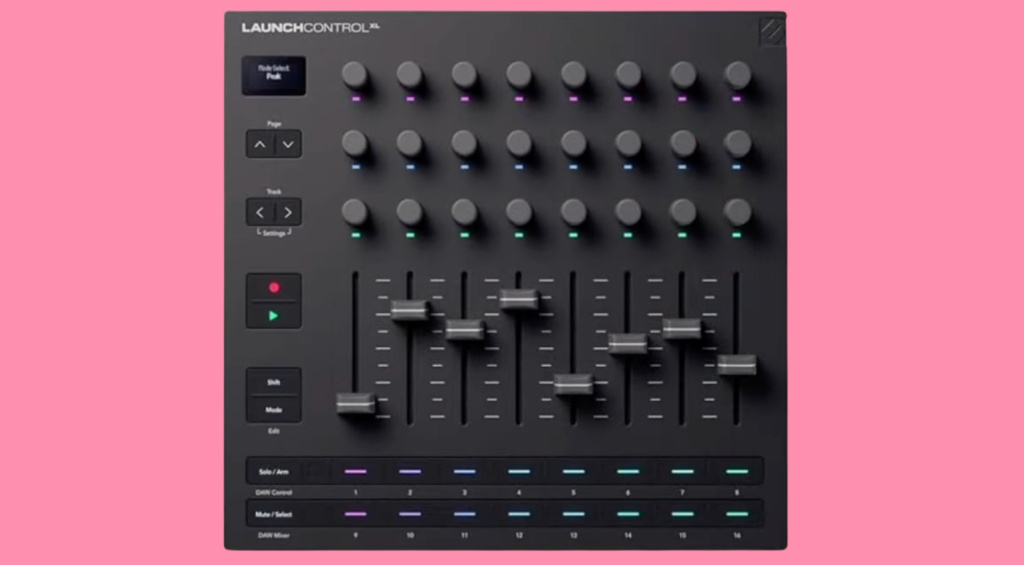
The controller connects to your computer via USB-C and has three 5-pin MIDI ports, a MIDI in, a MIDI out, and a combination MIDI out/thru port. This encourages you to not only connect the Launch Control XL to use with your favourite DAW, but also to use it with your hardware synthesizers, drum machines, and grooveboxes.
There is also a set of dedicated transport controls, and the useful OLED display will help you set up the controller with any DAW or device. Overall, the Launch Control offers a great deal of value for the price and now has a more solid construction, which makes it more roadworthy than ever. Get it at Thomann.*

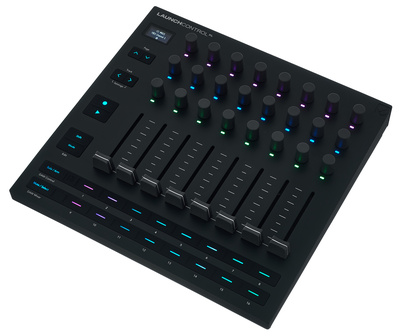
The Best DAW Controllers: AKAI APC40 Mk2
A trusted alternative to the Ableton Push controller, the APC40 Mk2 provides a portable, comprehensive solution for Ableton Live integration. The interface allows you to quickly bank across Live’s session view with the eight assignable faders and clip launch grid, giving you a complete overview.
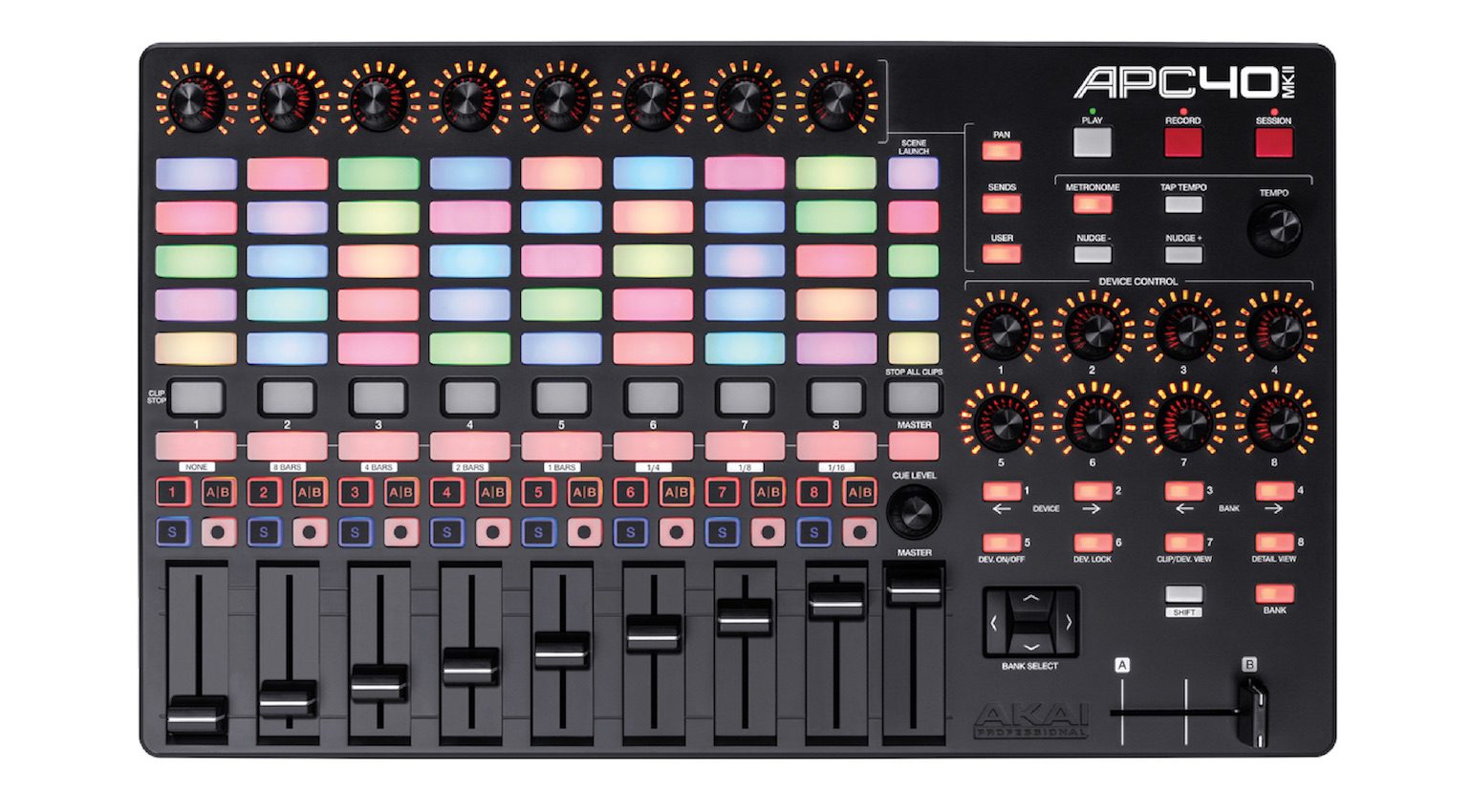
At the top of each channel, the encoders can select pan, sends, or a custom user assignment while the other eight encoders on the right of the console provide more extensive control of your instruments, racks, and effects.
If you’re looking to use Live on stage or create your arrangements on the fly, the APC is a great option that really doesn’t require much expertise to reap the benefits. As an even more compact alternative, be sure to check out the APC mini!
- More from AKAI Professional

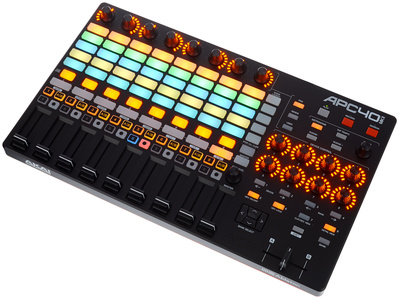

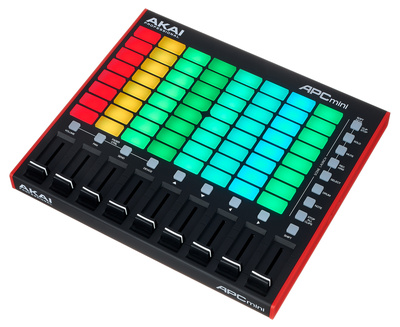
The Best DAW Controllers: Ableton Push 3
For more than a decade now, the Push has been the ultimate platform for interacting with Ableton Live. Now in its 3rd generation, the design of the Push is centered around its MPE-enabled 64-pad matrix, with pressure sensitivity and XY detection for expressive performance control. Also, the distinctive colour display with eight rotary controllers and a multifunction jog wheel makes navigation easy.
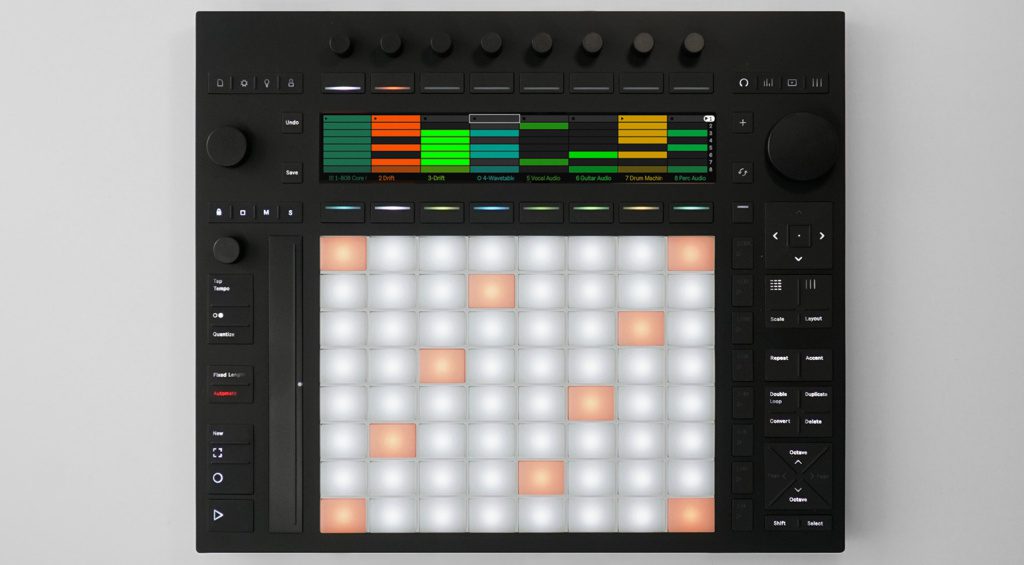
The Push controller is also equipped with an audio interface, so you can connect headphones, audio, and MIDI devices. There are no mic preamps or XLR inputs, but you can connect a preamp expander via ADAT, or simply use an external preamp or mixer to connect to the Push via its TRS inputs. Meanwhile, the sustain pedal inputs can also be configured as four CV outputs, which is useful for Eurorack users.
The Push is also available as a standalone music production station, and you can upgrade your Push 3 controller to add this functionality at any stage. The only drawback is that you won’t have access to any 3rd-party plugins in standalone mode, and there is no arrangement view feature. Get it at Thomann.*



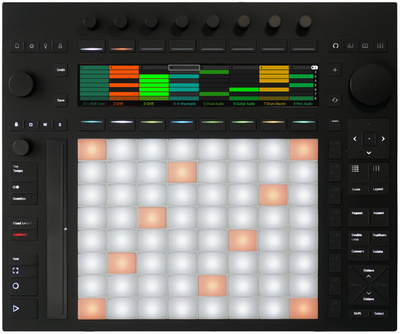

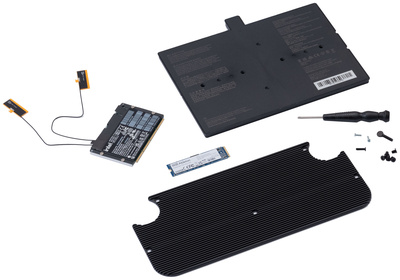
The Best DAW Controllers: Behringer X-Touch
Behringer has a great reputation for building DAW controllers with a wide range of compatibility options, and the X-Touch is a perfect example of this. The 8-fader interface, with transport controls and a large jog wheel, provides access to all the core DAW operations.
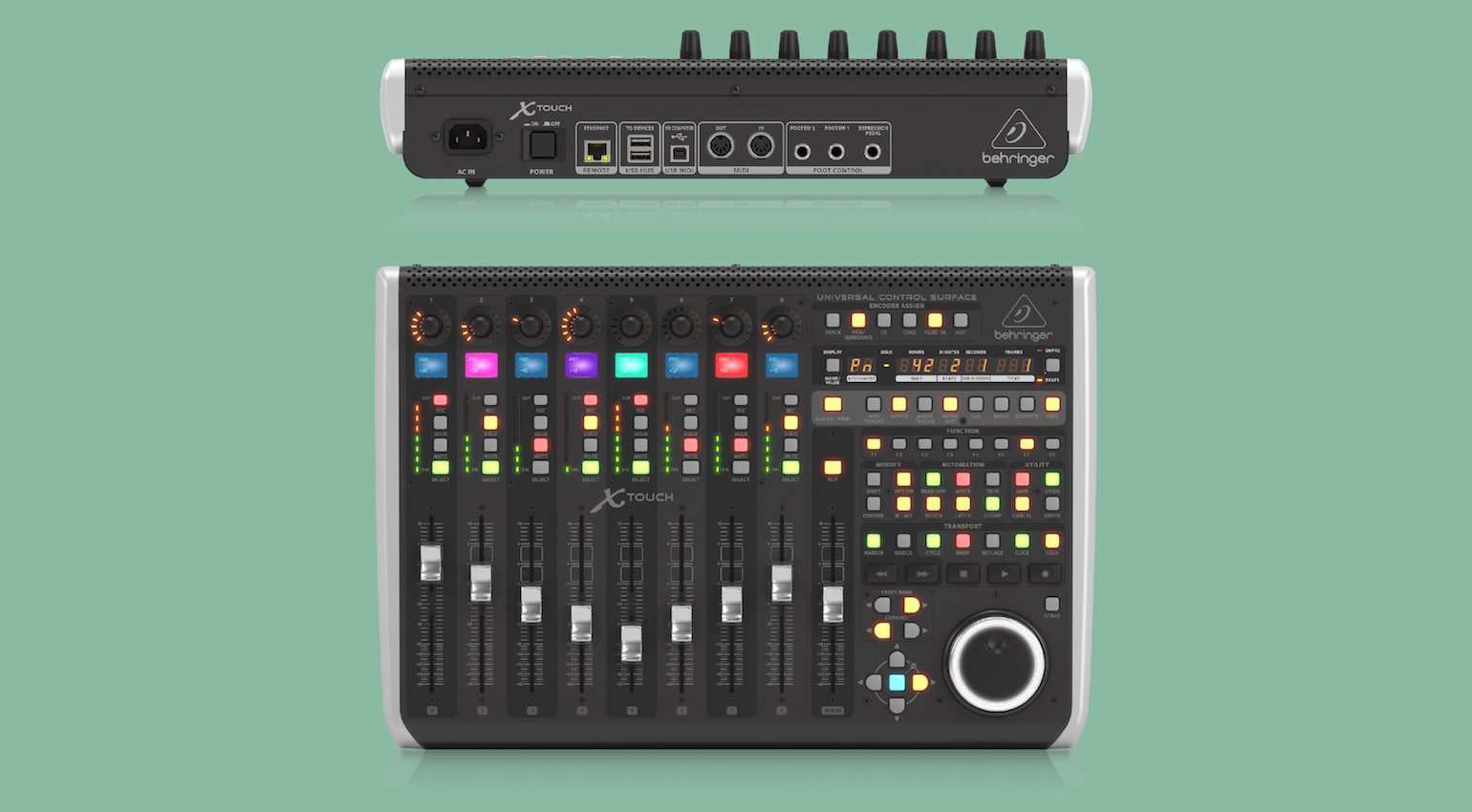
Meanwhile, the connectivity options are extensive, with ethernet, MIDI I/O, and a USB hub. In addition, both HUI and MCU protocols are supported, as well as RTP (Real-time Protocol) MIDI and X32 remote control via ethernet.
Overall, the X-Touch is a versatile tool for the price that offers expandability, with applications in both studios and live music environments.
- More from Behringer

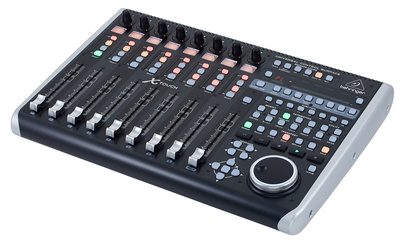

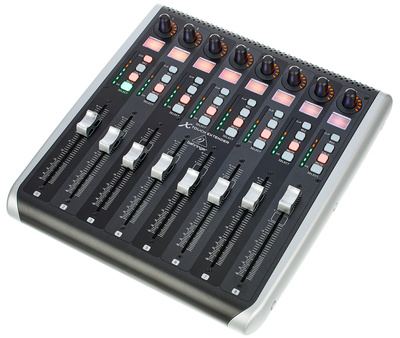
The Best DAW Controllers: Faderfox
If you go to an electronic music festival, chances are there will be at least one musician with a Faderfox controller using it to control Ableton Live, NI Traktor, Serato DJ, or a piece of hardware in their live rig. While many controllers you’ll find on the market get their strength from being designed for a single purpose or piece of software, Faderfox takes the more versatile route.
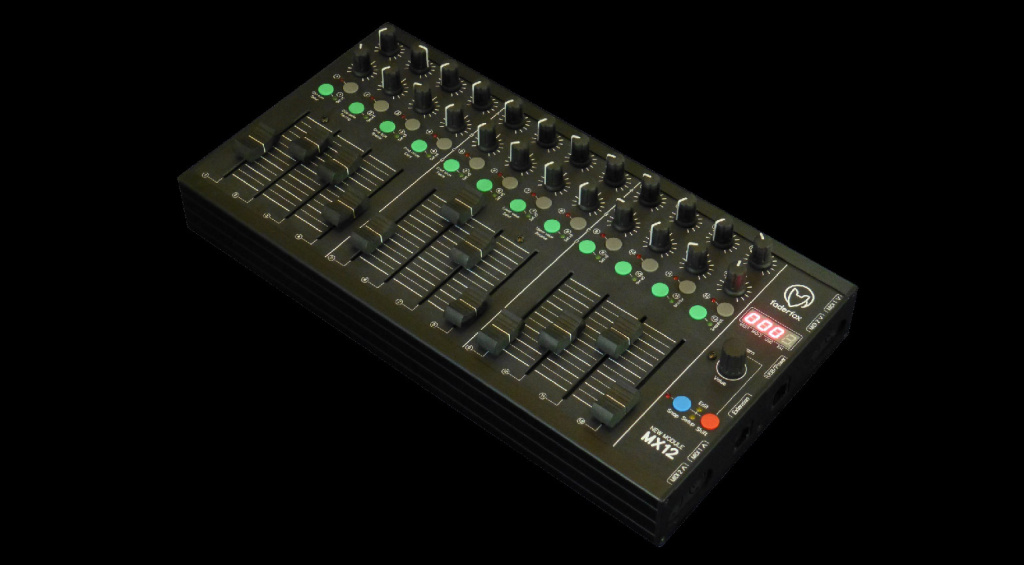
While they are quite pricey for controllers that don’t have motorized faders, they surely make up for it with the level of build quality through the rugged and distinctive black aluminium housings, and the level of customization, with an impressive amount of recallable mappings that you can use for different gear in your studio.
For the most part, the Faderfox controllers are built for portability and longevity. However, for those of us who don’t have endless desktop space in our home studios, they are an attractive prospect, and the manufacturer also offers custom controller builds if you have something particular in mind. Get it at Thomann.*

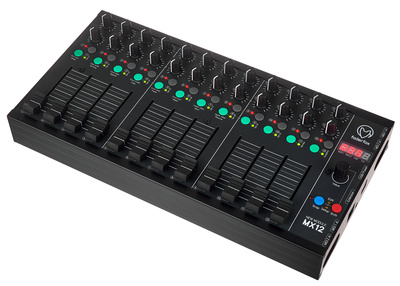

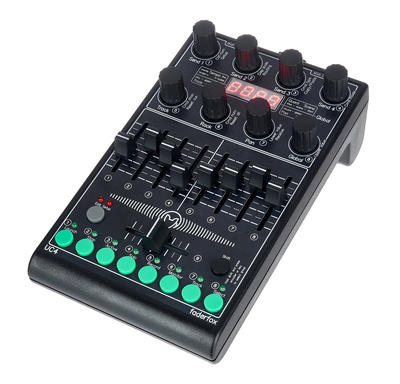
The Best DAW Controllers: Melbourne Instruments ROTO-CONTROL
The ROTO-CONTROL brings a concept from Melbourne Instruments’ Delia and Nina synthesizers, and while paying over $400 for eight motorized knobs sounds excessive, there is a little more to the device than first meets the eye. For one thing, the encoders don’t just track and recall MIDI values for automation; they can also provide stepped parameter feedback.
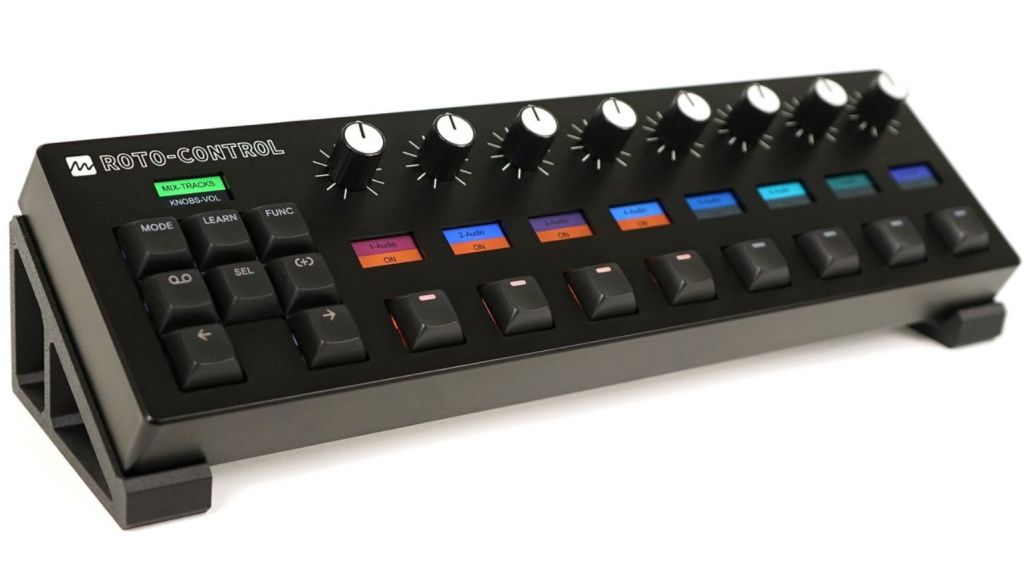
This means you can simulate the precise experience of adjusting the ratios on a compressor or switching effects on your favourite software instrument plugin. From the mechanical computer keyboard buttons to the nine tiny LC displays for labeling each parameter, Melbourne Instruments has taken care over each little detail to make the ROTO-CONTROL a true pleasure to use.
There is also Ableton Live integration, MIDI mode, a motion recorder, and 64 memory locations for different mappings. Overall, the ROTO-CONTROL is a precise, creative tool for musicians, producers, and engineers who favour an organic experience when it comes to control surfaces. Get it at Thomann.*


The Best DAW Controllers: SSL UF8
When it comes to fader-based control surfaces, the UF8, although expensive, is without a doubt one of the best options available. It only makes sense that a world-renowned console manufacturer like SSL would create controllers with a similar sensibility and overall quality.
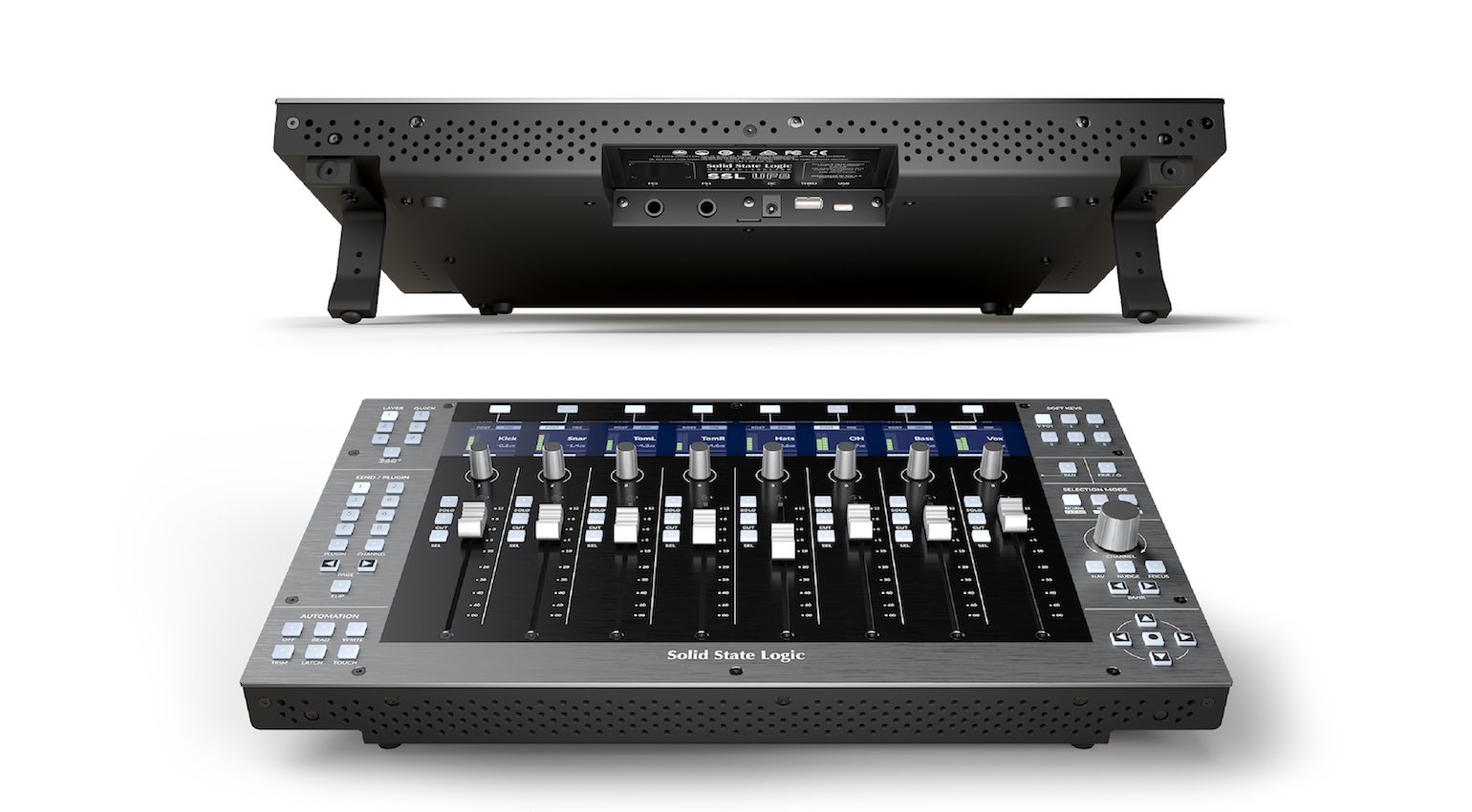
The UF8 includes mappings for most major DAW systems like Pro Tools, Cubase, Logic, Live, Luna, Nuendo, Studio One, and Pyramix. What’s more, you can control up to 3 DAWs at once which makes it compatible with the most complex of workflows with up to 32-fader expandability.
The way it gives you quick access to plug-in parameters without mapping makes it a very powerful and tactile system. Moreover, if you want to delve deeper into solutions like SSL 360° and the SSL plug-in suites, also check out the UF1 and UC1 controllers in this range.
- More from SSL



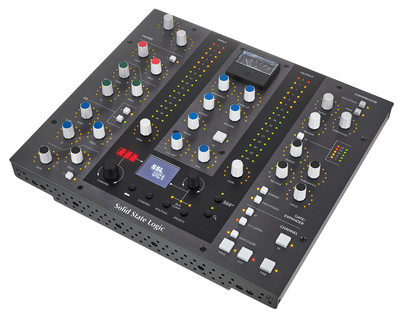
The Best DAW Controllers: Softube Console 1
Console 1 has become one of the best DAW controllers preferred by many professionals. With a complete scalable system for controlling plug-in and DAW operations, Console 1 is also backed by Softube’s high-quality software interface and plug-ins.
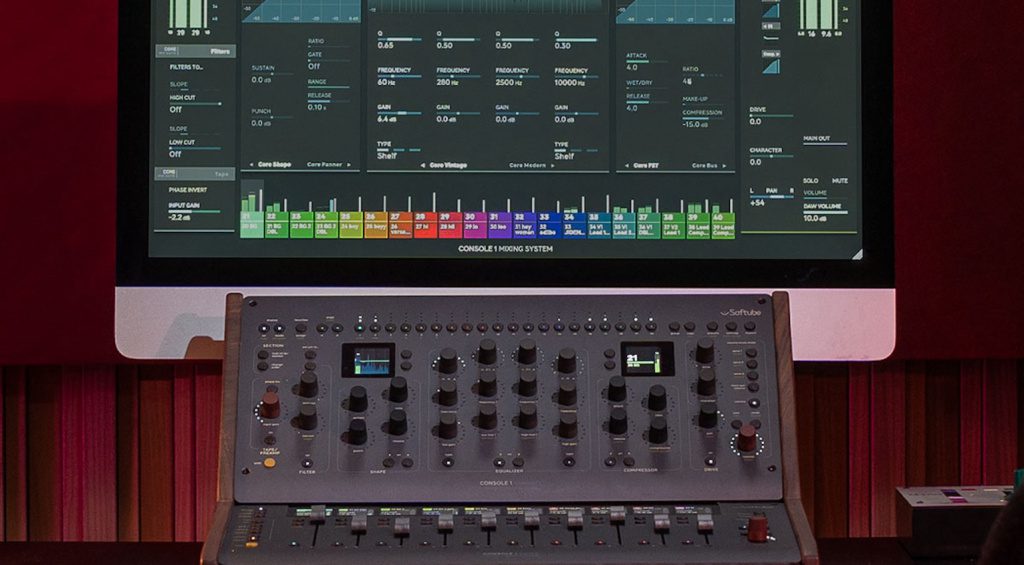
With the Console 1 Channel controller, you have analogue-style control of your channel-strip processing workflow. What’s more, you can also control the UAD plug-ins.
The Console 1 Fader also offers incredible precision and versatility, with the ability to control a wide range of different DAW systems.
- More from Softube

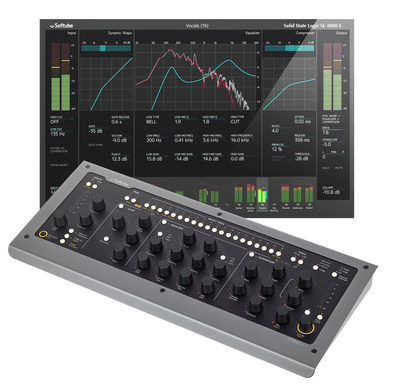

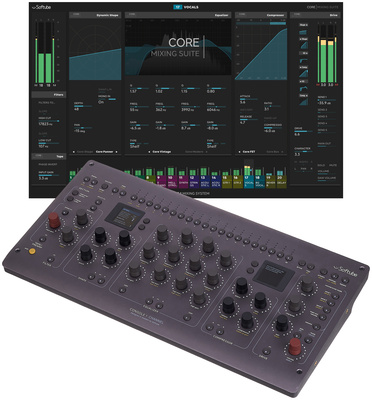

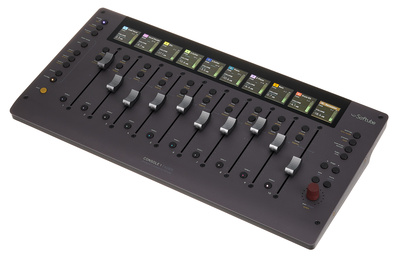
The Best DAW Controllers: Slate Audio Raven MTi MAX
If you prefer touchscreen interfaces, the Raven MTi MAX comes from a tried and tested series of controllers with a great reputation in the industry, especially among Pro Tools users.
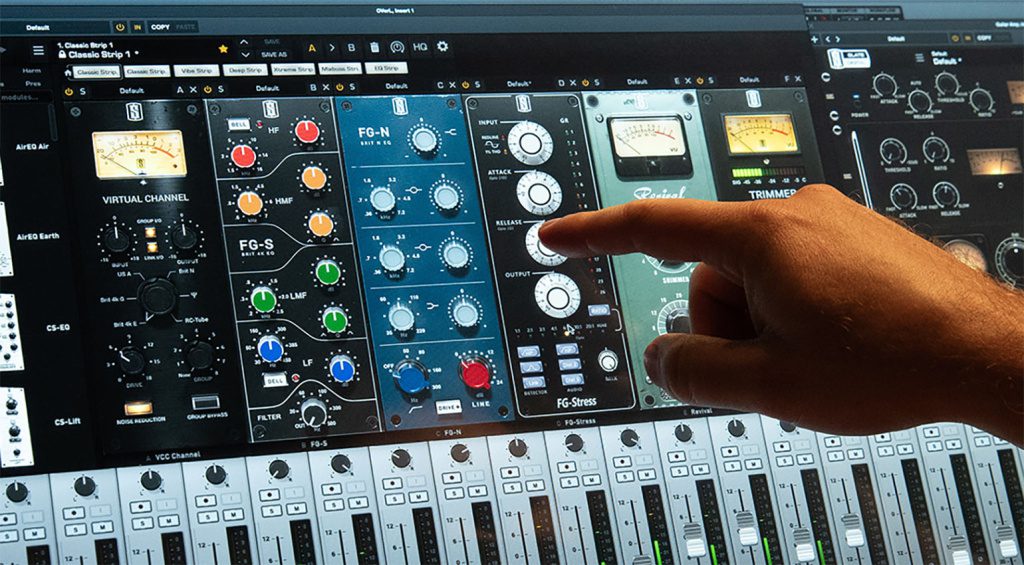
The fundamental difference with touchscreen interfaces is all interaction is directly visible, so plug-in control is a breeze. This means you won’t have to look back and forth between your screen and controller while working.
Furthermore, the Raven’s multitouch interface allows gestures, with 2 and 3-finger tap assignments which can really speed up your DAW workflow. Your friends in audio certainly won’t be making “Slow Tools” jokes anymore.
- More from Slate Audio

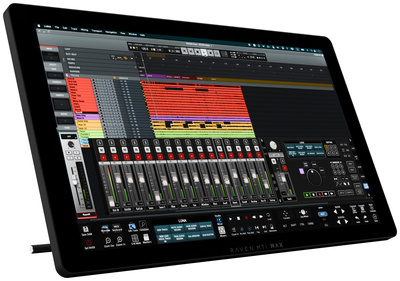
The Best DAW Controllers: Asparion D700
The Asparion D700 is a premium DAW controller system that offers expandability all the way up to 64 faders with the D700F expansion units. Each module is equipped with eight professional-grade 100 mm touch-sensitive motorized faders, each running on a high-res 4000-step 12-bit grid for precise control.
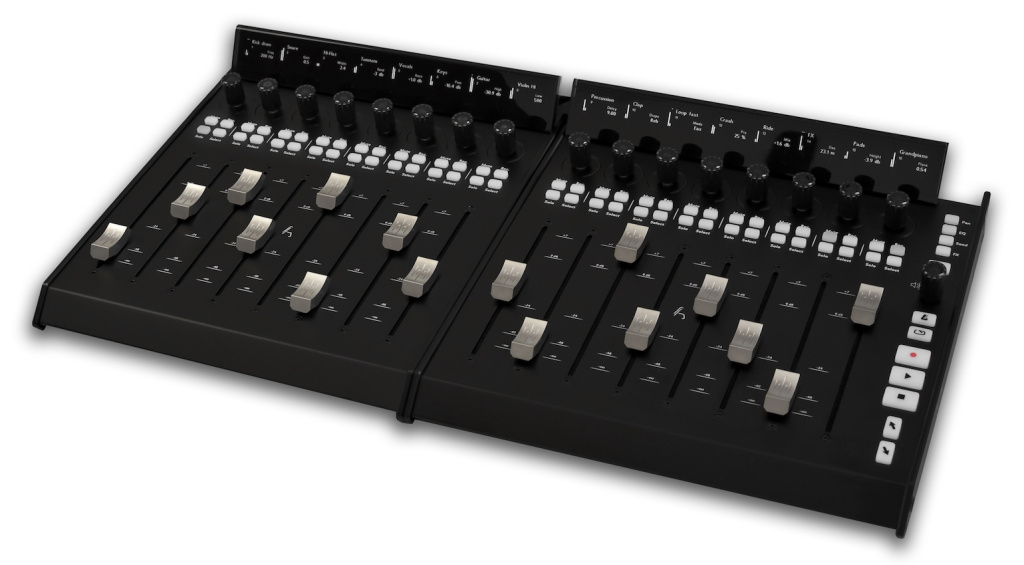
On each channel, there is an RGB-lit rotary encoder and dedicated buttons for solo, mute, and record enable. What’s more, the encoders have different modes that are easily accessible with the pan, EQ, send, and FX buttons, and there are transport controls for your basic DAW operations.
The D700 supports Mackie Control, HUI, and MIDI protocols, and you can create custom mappings with the accompanying Asparion Configurator Software. Meanwhile, for a more compact option, you can check out the D400, and all Asparion controllers can be upgraded with the LED display modules. Get it at Thomann.*





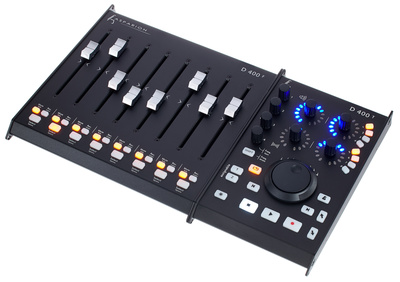
More about the Best DAW Controllers:
Videos:
*Note: This article about the best DAW controllers contains promotional links that help us fund our site. Don’t worry: the price for you always stays the same! We will receive a small commission if you buy something through these links. We appreciate your support!
7 responses to “The Best DAW Controllers to Improve your Production Workflow”

 3,8 / 5,0 |
3,8 / 5,0 | 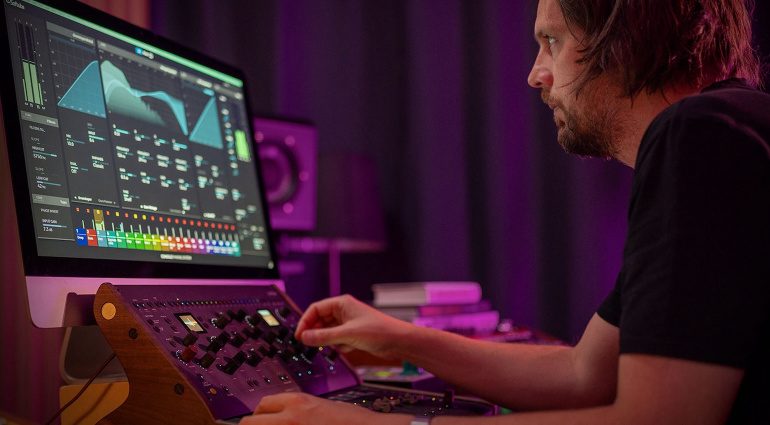


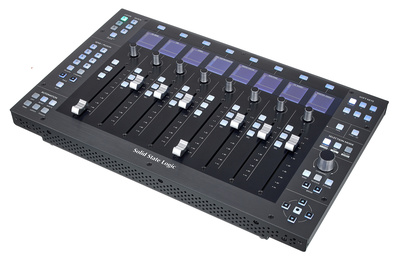
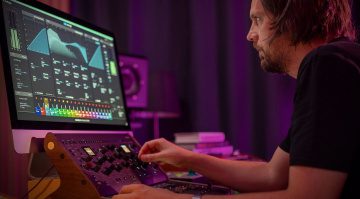

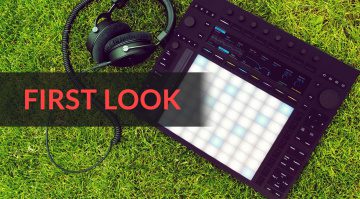
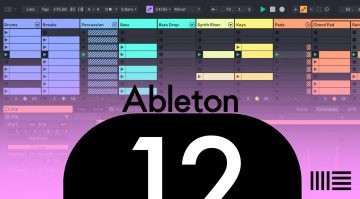
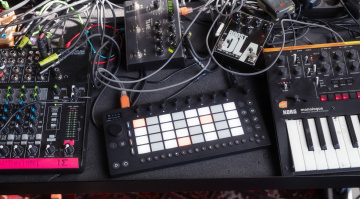
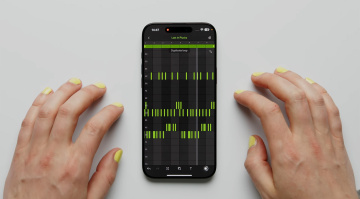
Softube Console 1 system is the best option for me.
I prefer 1 fader controller, and I use Faderport.
I’ve been using the Slate Raven touchscreen for almost a decade.
Nobcontrol for me
I was hoping to see the controllers made by Rocksolid Audio mentioned! They look very interesting.
At the end of the day, the best DAW controller is still your mouse and keyboard. There is no controller in the market that would replace them 100% while speeding up the workflow.
No Nektar CS12 for Cubase and protools? That a joke.
You are currently viewing a placeholder content from Facebook. To access the actual content, click the button below. Please note that doing so will share data with third-party providers.
More InformationYou are currently viewing a placeholder content from Instagram. To access the actual content, click the button below. Please note that doing so will share data with third-party providers.
More InformationYou are currently viewing a placeholder content from X. To access the actual content, click the button below. Please note that doing so will share data with third-party providers.
More Information